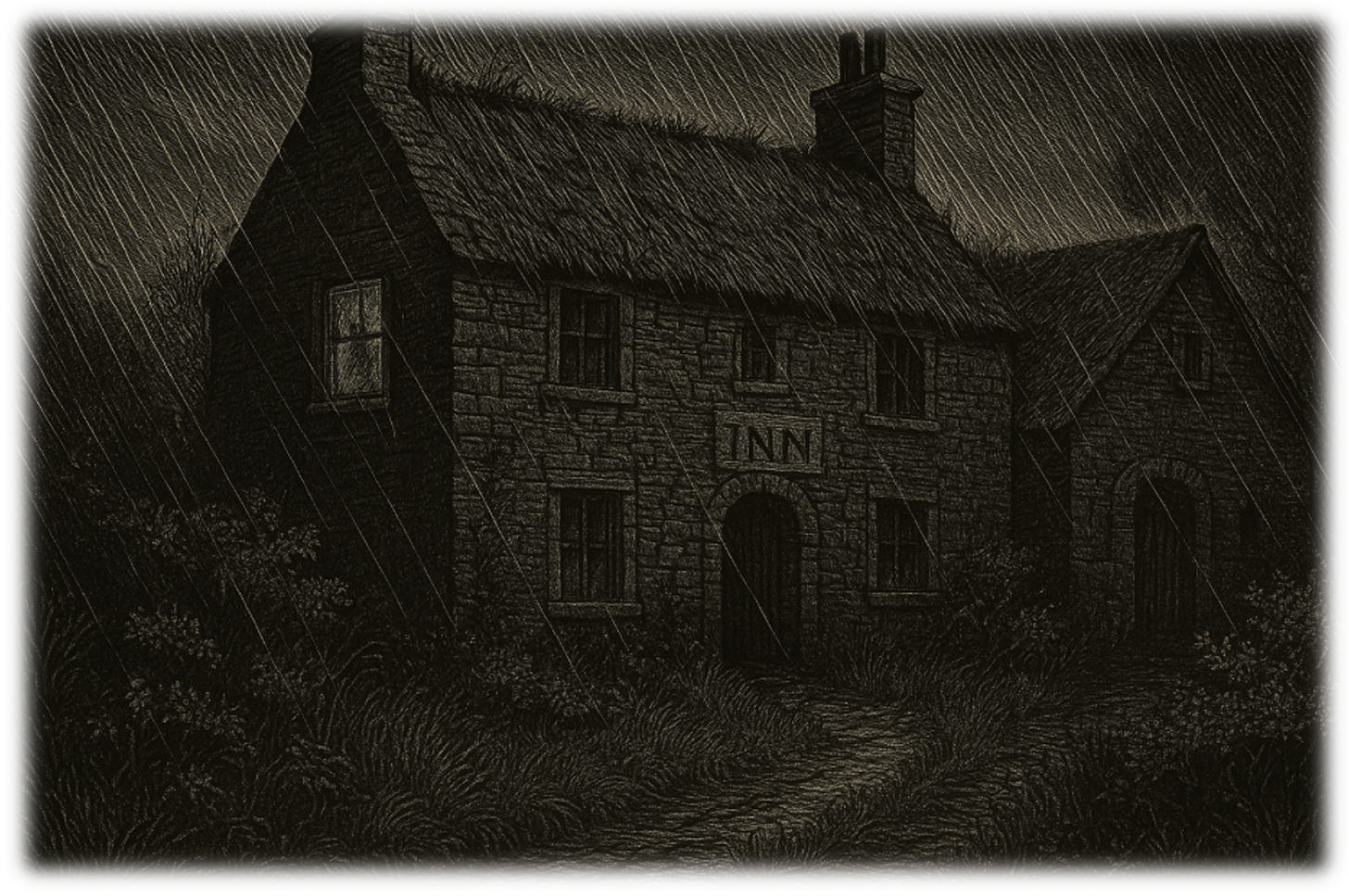Some characters carry their past the way others carry knives. It darkens their gaze, skews their decisions, and turns every kiss or kind word into a potential trap. If we can capture the shape and weight of that past just right, these characters become more than complex; they become haunted.
In romantic thrillers (or honestly, most thrillers), the tension shouldn’t only come from external threats; the ticking clock, the shadowy figure at the window, the former KGB killer turned stolen art dealer. The most gripping conflict most often rages inside the characters themselves. One way to deepen that internal drama is to treat the past not as exposition, but as an active force shaping the present.
In For Her Eyes Only, Finn doesn’t just inherit a derelict Scottish inn. He inherits a crumbling pile of grief, estrangement, and expectation, all sunk into the walls and warped floorboards. Dun Roamin is more than just a setting; it’s the physical embodiment of everything he never got to say to his parents or grandfather. Every broken window, power outage, and strange sound in the night reminds him (and us) that he’s not just here to renovate a building. He’s here because he needs some repair work, too.
Sam, meanwhile, is a field agent recovering from a mission gone catastrophically wrong. Officially, she’s on leave. Unofficially, she thinks of herself as being in exile. Unlike Finn, the full-disclosure champion, Sam would rather bite her tongue than speak her truth. She doesn’t come to Wee Jasper to heal. She comes to disappear.
Their personal histories make them nicely suited to look after each other. Their ghosts surface in flickers: in how Finn flinches from conflict, even when it’s necessary, and in how Sam stiffens at comfort, dodges praise, and sidesteps any question that might invite vulnerability. These reactions don’t interrupt the story; they are the story. They give us texture, tension, and emotional truth without pages of emo-dumping exposition. The trick isn’t to spill the beans; it’s to let the ghosts moan a little just out of sight.
When writing characters like these, ask yourself: What does your protagonist believe about their past that might not be true? Shame is a potent force in fiction, just as in life. So too is misremembering. A haunted character often carries a flawed understanding of their own narrative. Maybe it’s a false lesson they’ve internalised, or some painful truth they’ve remade into something survivable. That memory becomes the real antagonist. It whispers doubts and poisons the possibility of something new.
So let the past live in your characters’s present. Let it shape their habits, the ones they don’t even realise they’re repeating. Let it echo in the relationships they sabotage and the intimacy they resist. Let them lie to themselves and others. It’s all good. That’s human. And the reader will feel that tension building, moment by moment, as something old and unresolved presses against something fragile and new.
And when love finally breaks through? It’s not just about chemistry or timing. It’s about grace. It’s about forgiving the version of yourself who lived through the worst thing that ever happened, or what felt like the worst thing.
(Honestly, I’m not sure Finn’s memory of being dumped by Sativa at the Cambridge Reenactors’ Guild Ball quite qualifies as epic human tragedy, but, you know. Guys are like that.)
So bring in the ghosts. Let them walk the halls and pour through keyholes. Let ‘em haunt your characters. Just don’t let them call all the shots. Because at some point, if your character wants to move forward, they have to stop listening to the dead—and get on with living.




